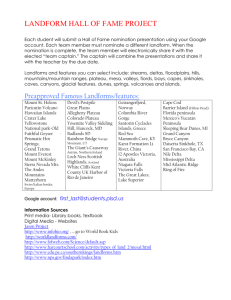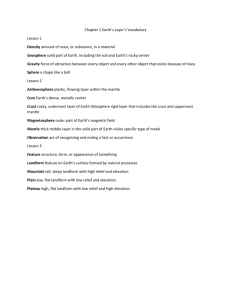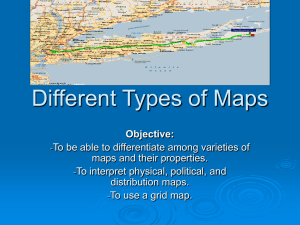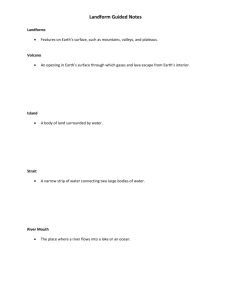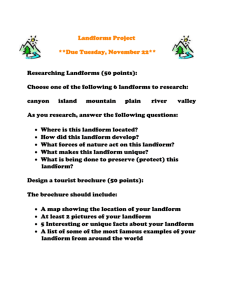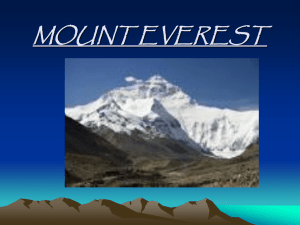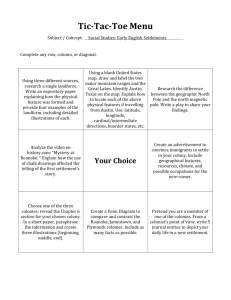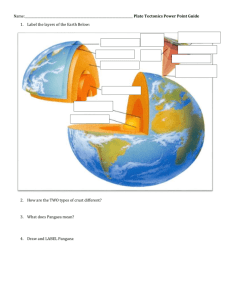Landform Profile Assignment
advertisement
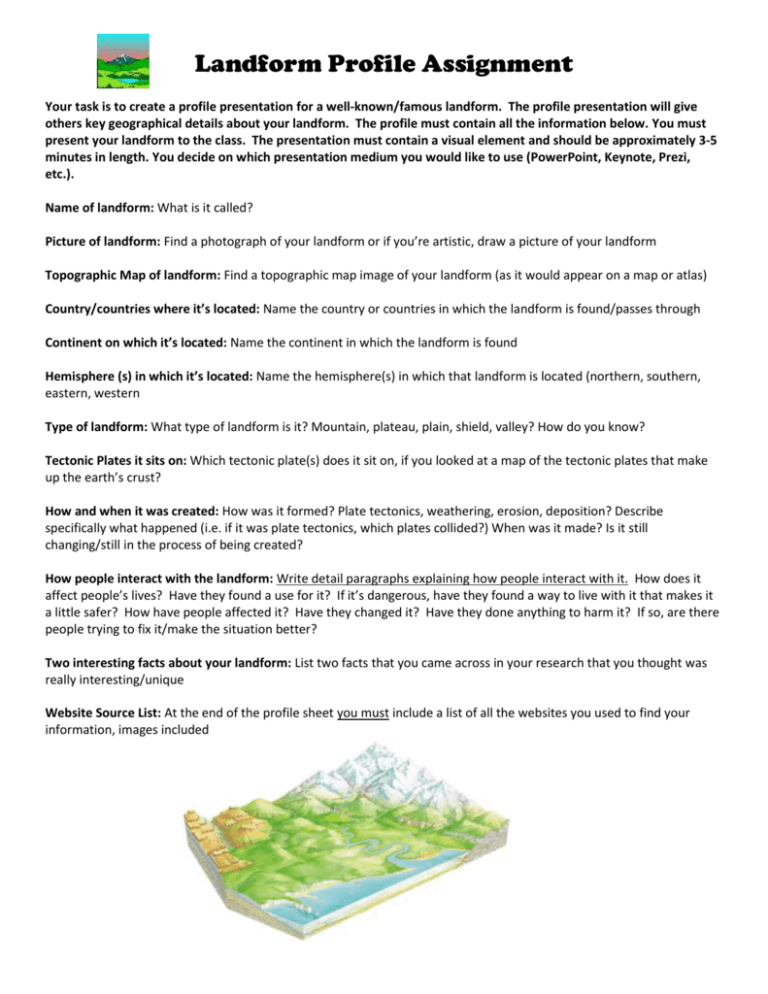
Landform Profile Assignment Your task is to create a profile presentation for a well-known/famous landform. The profile presentation will give others key geographical details about your landform. The profile must contain all the information below. You must present your landform to the class. The presentation must contain a visual element and should be approximately 3-5 minutes in length. You decide on which presentation medium you would like to use (PowerPoint, Keynote, Prezi, etc.). Name of landform: What is it called? Picture of landform: Find a photograph of your landform or if you’re artistic, draw a picture of your landform Topographic Map of landform: Find a topographic map image of your landform (as it would appear on a map or atlas) Country/countries where it’s located: Name the country or countries in which the landform is found/passes through Continent on which it’s located: Name the continent in which the landform is found Hemisphere (s) in which it’s located: Name the hemisphere(s) in which that landform is located (northern, southern, eastern, western Type of landform: What type of landform is it? Mountain, plateau, plain, shield, valley? How do you know? Tectonic Plates it sits on: Which tectonic plate(s) does it sit on, if you looked at a map of the tectonic plates that make up the earth’s crust? How and when it was created: How was it formed? Plate tectonics, weathering, erosion, deposition? Describe specifically what happened (i.e. if it was plate tectonics, which plates collided?) When was it made? Is it still changing/still in the process of being created? How people interact with the landform: Write detail paragraphs explaining how people interact with it. How does it affect people’s lives? Have they found a use for it? If it’s dangerous, have they found a way to live with it that makes it a little safer? How have people affected it? Have they changed it? Have they done anything to harm it? If so, are there people trying to fix it/make the situation better? Two interesting facts about your landform: List two facts that you came across in your research that you thought was really interesting/unique Website Source List: At the end of the profile sheet you must include a list of all the websites you used to find your information, images included Name of Landform: Mount Everest Picture of Mount Everest: Topographic Map of Mount Everest: Country/countries where it’s located: Mount Everest is part of China (Tibet) and Nepal Continent on which it’s located: It is part of Asia Hemisphere(s) in which it’s located: Mount Everest is located in the Northern and Eastern hemispheres Type of Landform: Mountain, part of Himalaya mountain range. It’s a mountain because it is a piece of land that is higher the land around it and it contains peaks (pointed pieces of land at the top). Plate(s) it sits on: Indo-Australian plate and Eurasian plate How and when it was created: It was created around 50 million years ago when the Indo-Australian plate collided with the Eurasian plate. The edges of the plate became squashed, thickened, and were pushed upwards to form the Himalaya mountain range, of which Mount Everest is a part. The Indo-Australian plate continues to move upwards, causing the mountain to continue to grow taller. How people interact with the landform: Some people treat Mount Everest like a challenge because it’s one of the highest mountains in the world. Since it was first climbed in 1953, many people have tried to reach its summit (the top). The temperatures are very harsh/severe; the temperatures are cold and the winds are high. Every year, hundreds of people try to climb Everest. A couple thousand people have been successful, but approximately 190 people have died trying, and their bodies remain along the mountain. Some local people, who live in the Khumbu Valley, Nepal, earn a living serving as Sherpas or guides for people interested in climbing Mount Everest. Those living in the region have been there for generations and have adapted to the high altitudes. They can carry the heavy equipment and are used to the lack of oxygen. The income/money earned from people visiting Mount Everest has helped the people living in the Sherpa communities around the mountain to build up their communities with schools, hospitals, and stores. While this is positive, there are some negatives: deforestation and litter. Trees are being cut down to use for firewood, and having more climbers and tourists creates more garbage/waste. Organizations, such as the Everest Environmental Expedition are helping to clean up the waste being created and the Nepalese government now makes climbers pay a $4, 000 deposit that they only get back if they come back from the climb with the same amount of equipment with which they went up. Two interesting facts about your landform: Mount Everest was first climbed in 1953 by a climber from New Zealand named Edmund Hillary with the help of a Sherpa from Nepal named Tenzing Norgay The mountain has many names. In Nepal, the mountain is known as “Sagarmatha”, meaning ‘forehead of the sky’ and in Tibet, the mountain is known as “Chomolungma”, which means ‘mother of the universe.’ Website Source List Images: http://upload.wikimedia.org/wikipedia/commons/3/36/Mount_Everest_as_seen_from_Drukair2.jpg http://www.reliefshading.com/examples/pictures/mteverest.jpg http://images.nationalgeographic.com/wpf/media-live/photos/000/499/overrides/sir-edmund-hillary-tenzingnorgay_49965_600x450.jpg Geographical Information: http://education.nationalgeographic.com/education/media/mount-everest/?ar_a=1 http://adventure.howstuffworks.com/outdoor-activities/climbing/mount-everest5.htm http://www.unlockingthearchives.rgs.org/resources/documents/The%20making%20of%20Mount%20Everest2.p df http://news.nationalgeographic.com/news/2002/05/0507_020507_sherpas_2.html http://adventure.howstuffworks.com/dead-everest.htm http://www.mounteverest.net/expguide/sherpas.htm http://www.telegraph.co.uk/travel/activityandadventure/10079261/Everest-Sixty-fascinating-facts.html
